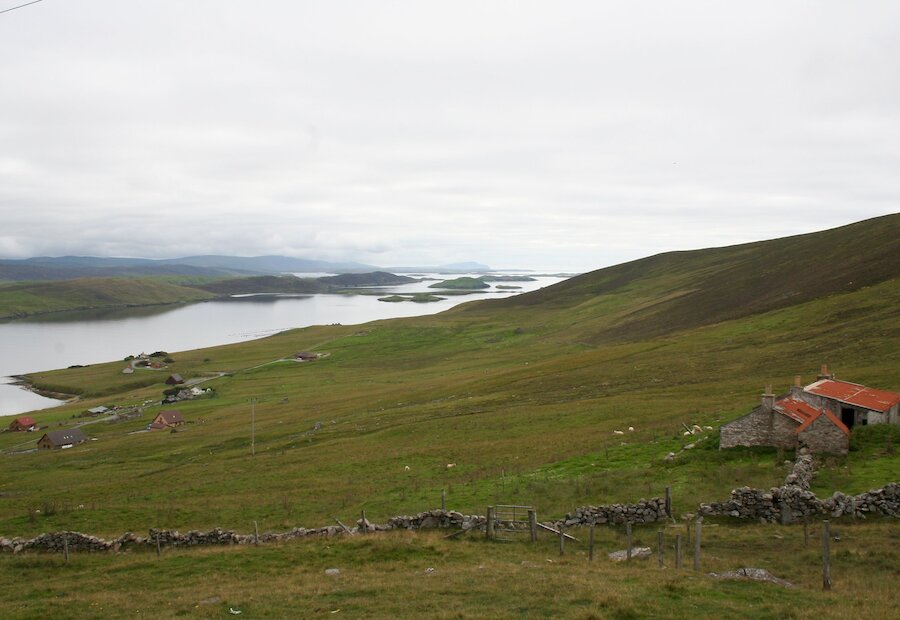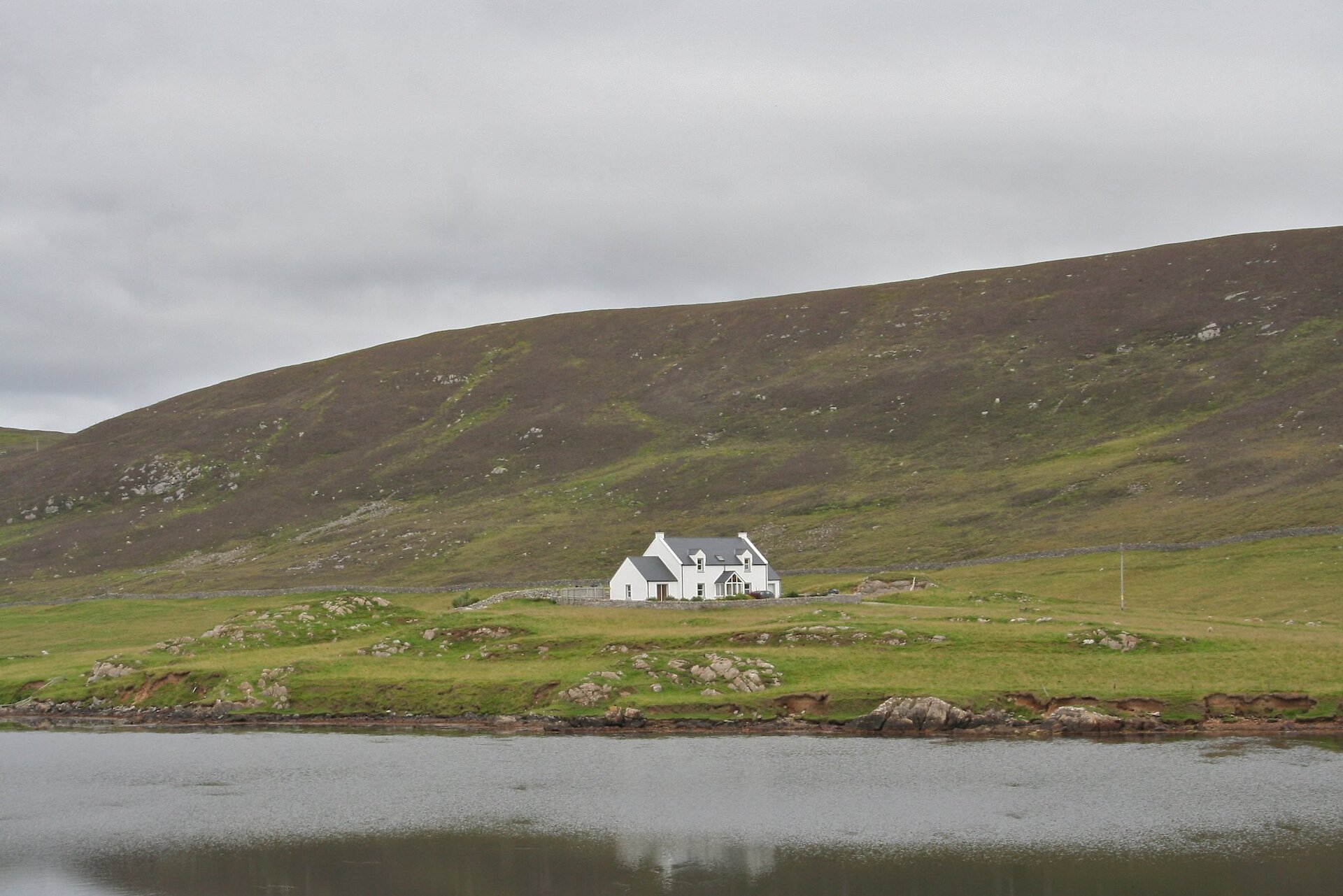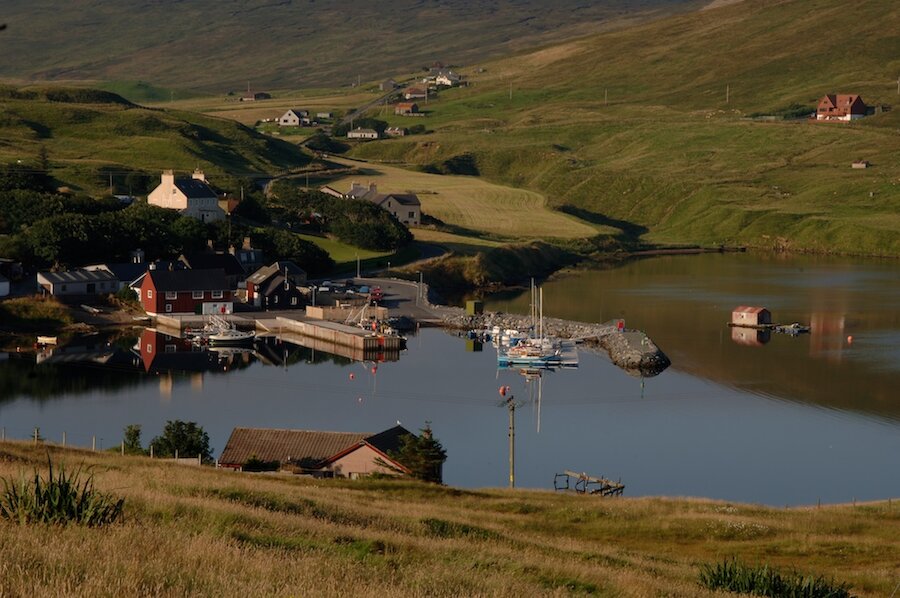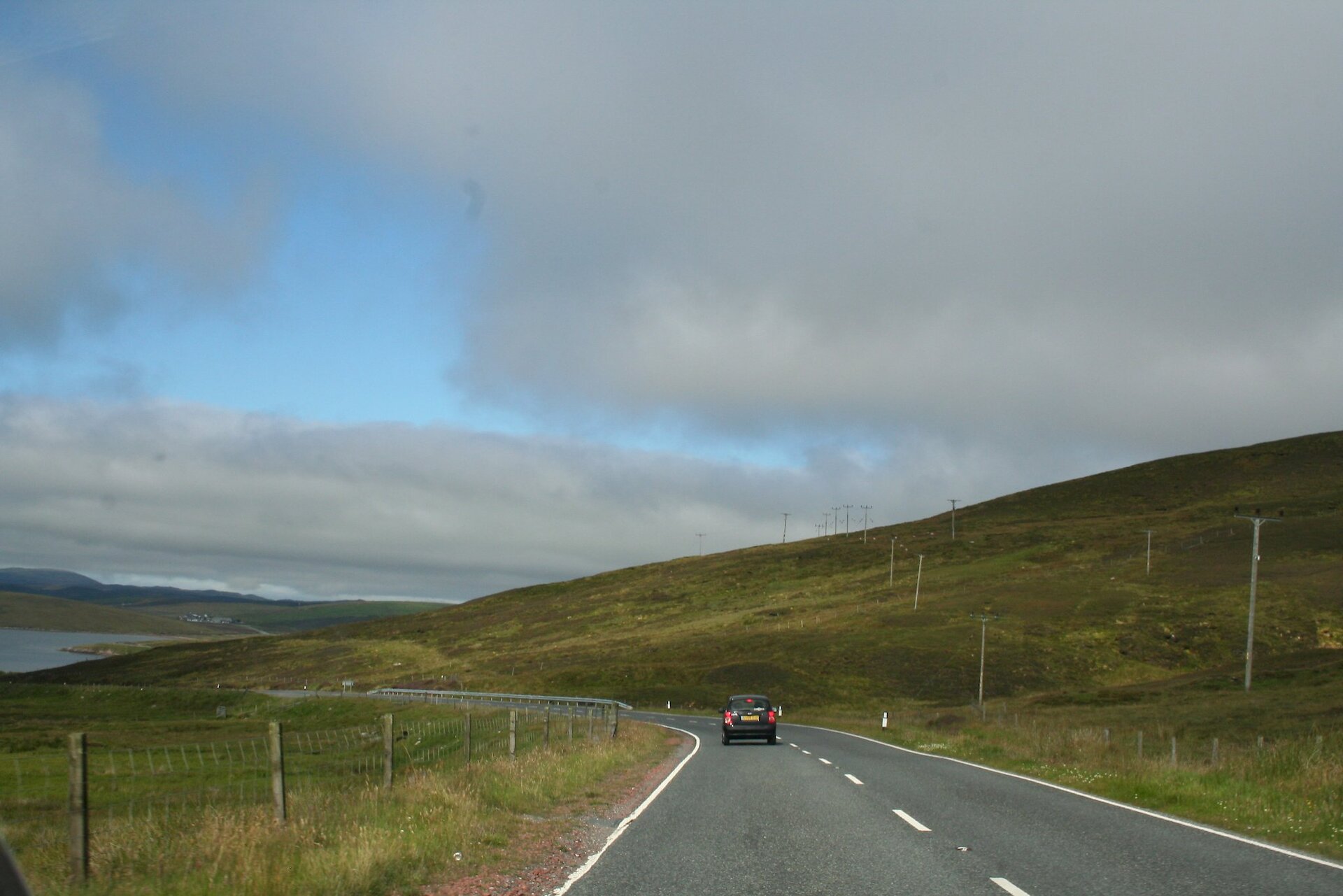The route presented here crosses from east to west through Tingwall and so largely takes the western route, however it is also possible to take the fast and often busy A970 direct to Brae through Voe or take the longer east route towards Vidlin and turn left at Laxo for Voe and on to Brae.
At 30 miles (48km), the direct east route is a little shorter and has less climbing, but does follow the fast and at times busy stretches of the A970; the main arterial route north from Lerwick towards Brae and Sullom Voe. To take the longer east route you can follow Lerwick-Vidlin to Laxo and then Vidlin-Brae from Laxo.
It is possible to do a hybrid of both routes by ‘The Third Way’ connecting the two via the B9075 at Weisdale and then a short section (heading south to the Nesting junction) on the A970. This is the longest of all the options, but combines the best of both east and west.
Leaving Lerwick from the north, passing the Northlink Ferry terminal, this route will take the busy A970 north to join the A971 just beyond the Veensgarth junction. (An alternative option would be to go south from Lerwick and over to Scalloway then taking the route through Tingwall).
A970 north road out of Lerwick can be extemely busy in the morning and evening rush hour periods with commuter trafic mixed with HGVs and service busses. There is a long steep hill from the outskirts of Lerwick with a third crawler lane for slow traffic. From the top of the hill there is a steep descent to the sharp bend and a busy road junction followed by a long steep climb up the past a golf course. From the hill above the golf course the A970 descends past the Veensgarth junction.
From where the route joins the A971 near Tingwall airstrip there is a long climb to the top of Wormadale, where the reward is some of the most magnificent views in Shetland. From the viewpoint the panaroma takes in the drowned valley of Whiteness Voe and the islands to the south then contrasts the green headland of Whiteness with the heather covered Strom Ness beyond. On a clear day the three peaks of Foula can be see some 25 miles (40km) to the west. Immediately below the viewpoint is the settlement of Nesbister and the destinctive building on the headland is Nesbister Böd, part of Shetland Amenity Trust’s network of camping böds (camping barns).



